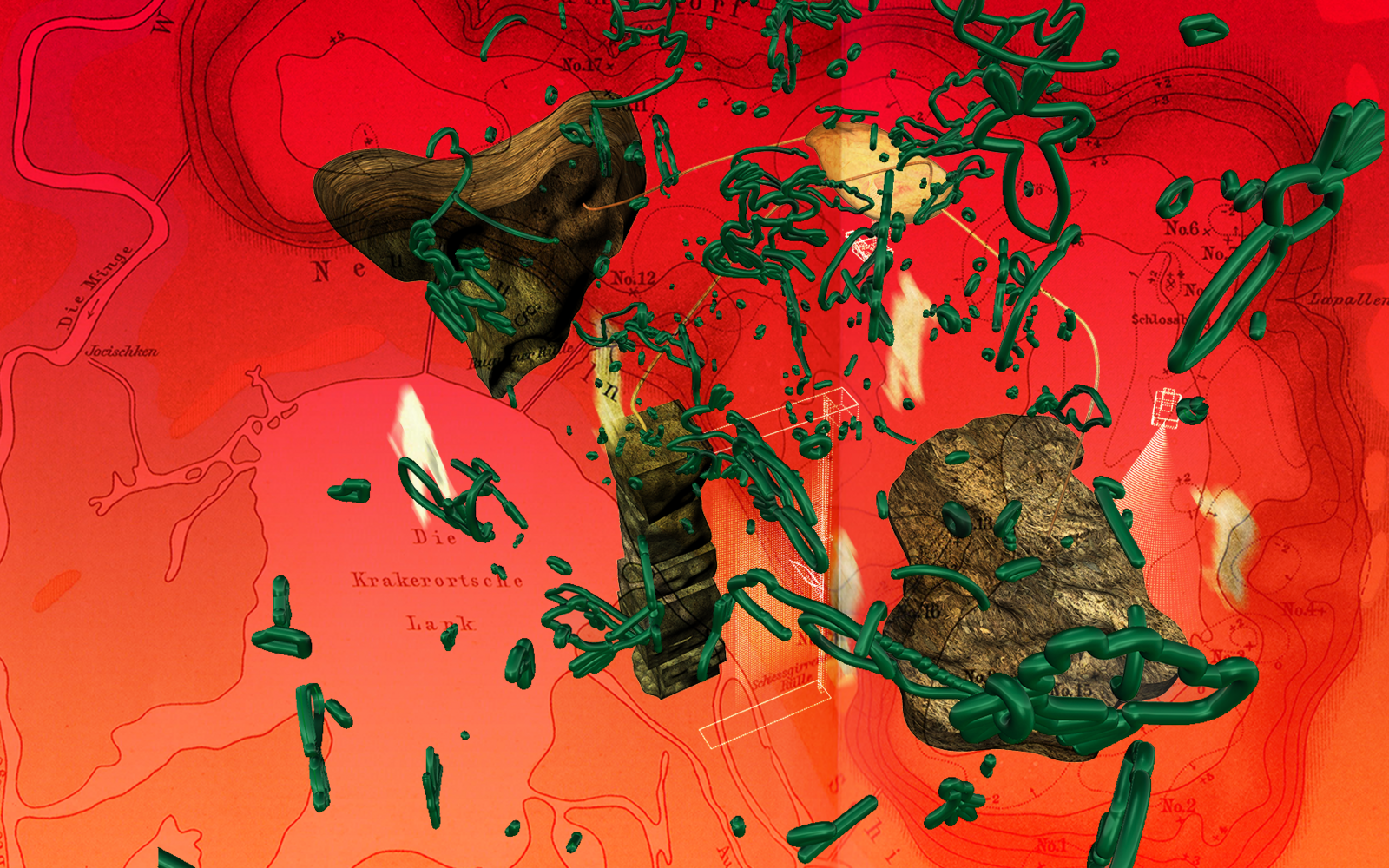Terrestrial University: Swamps and the New Imagination
Performative book presentation »Swamps and the New imagination. On the Future of Cohabitation in Art, Architecture and Philosophy«
Thu, May 13, 2021 7:00 pm CEST
- Location
- Online
- Language
- English
Swamps are not only sinks for carbon but also vessels for our imagination. By providing habitats to a plethora of beings, they facilitate the biodiversity that flourish in the morass. The book »Swamps and the New imagination. On the Future of Cohabitation in Art, Architecture and Philosophy« (Sternberg Press, 2021) invokes the concept of a »swamp« as a tool to address the vital urgency of human cohabitation with other forms of life, placing the swamp at the crossroads of disciplines and practices.
The term »swamp« belongs to the family of wetlands that, together with marshes, bogs, mires, fens, mangroves, and meadows refer to the gray zones that sit between land and water. In that sense, the term can be considered a metonym attributed to a variety of transitional ecosystems and functions. Charged with cultural political symbolism, swamp is also an irritant term that delineates an uncanny territory in between the solidity of determined real and the illiusions of fluctuating otherness.
A »swamp« is more than a biological ecosystem, it is a milieu of manifold relationships, which fosters discussions about the possibility of sympoietic co-existence—i.e. the human becoming shaped collectively with plants, animals, bacteria, fungi and minerals. Being a very particular modality—»an interface of Gaia«—offering a »face«, a certain physiognomy to a faceless networks of relations, swamp can teach us about the ways of co-existence conceived as co-creation. The contributors to this book expand on swampy notions, probe experimental art and architecture, intercalate philosophy and queer theory, and filter ideas through the lens of posthumanist ecology, informed by the histories and theories of cybernetics, sociology, and the commons.
An introduction by editors Nomeda & Gediminas Urbonas with Kristupas Sabolius will be followed by Joan Jona's reading performance and visuals from NODE Berlin Oslo. Contributors to the book Astrida Neimanis, Jennifer Gabrys, Vittoria Di Palma, María Puig de la Bellacasa and Dimitris Papadopoulos, will unpack the emergent worlds discussed in their essays. With questions from Nikola Bojić and the audience.
The event will be held in English.
»The Swamp Game« by Nomeda & Gediminas Urbonas with MIT Climate Visions, Rendering by Indre Umbrasaite, 2020.
The work »Swamp Game« on the virtual platform of the exhibition »Critical Zones« takes you into the swamp in a playful way. Artists Nomeda and Gediminas Urbonas, in collaboration with MIT Climate Visions, have created a game that allows a change of perspective. As insects, birds, amphibians, fungi or algae we move through the virtual world.
Visit the virtual artwork here!
Terrestrial University: Swamps and the New Imagination
Terrestrial University
-
More on the Terrestrial University
The »Terrestrial University« is an experimental lecture series in the context of the exhibition »Critical Zones – Observatories for Earthly Politics«, and we cordially invite you to attend the class. In a kind of lecture series of different formats such as lectures, discussions, artist talks, performance lectures or workshops, we turn to the critical situation of the Earth. Together with invited artists, scientists, curators and citizens as well as citizens' initiatives, we explore the »critical zone« -– the thin surface of the Earth, in which all transactions of life are mutually dependent. The focus is on the crucial question of which shifts in thinking are necessary to maintain the »critical zone« in its fragile balance.
The »Terrestrial University« will be broadcasted via live stream, and accompanied by the chat of the Critical Zones Telegram group. You can find the past events of the »Terrestrial University« here under.
